The country is forming a society that is increasingly struggling to integrate its youth.

Unfortunately, over the past 10 years, there has been a significant rise in serious crime in this country. What Statistics Canada refers to as the Crime Severity Index has jumped from 68.7 in 2013 to 80.5 in 2023 (the latest full year of available data). Among the perpetrators of such serious crimes as homicide, male aggressors are vastly overrepresented, with a median age of around 30 years. Young adults also have a high participation rate in crimes involving weapons and serious assault (according to the same source).
The rise in these dramatic incidents and their media coverage have launched a debate about mental health in this country, the premise (perhaps not entirely farfetched) being that those committing such crimes might not be in their right minds!
But even if this idea seems legitimate, we believe that this kind of social phenomena derives more from the social polarization that is isolating individuals, especially young people, in lifestyles that predispose them to such social dysfunction.
Based on the results of our studies, we believe that this type of criminality is the result of marginalization, of a disconnect from the world around them and the demands of living together in society.
Obviously, our surveys cannot identify the specific individuals suffering from the extreme marginalization that might drive them toward criminal activity. On the other hand, if we agree with the hypothesis that “social disconnect” and the phenomena associated with it could be a trigger for these crimes, then this disconnect is easily measured.
We use several indicators in our surveys to measure these phenomena. Here are a few that, in our opinion, are the most eloquent on the subject. However, it should be noted that these results and the observed trends are fairly similar across provinces, which is why we focus our analysis in this text on Canada as a whole.
Social disconnect in the country
First and foremost, feeling disconnected to what’s happening in the world around them.
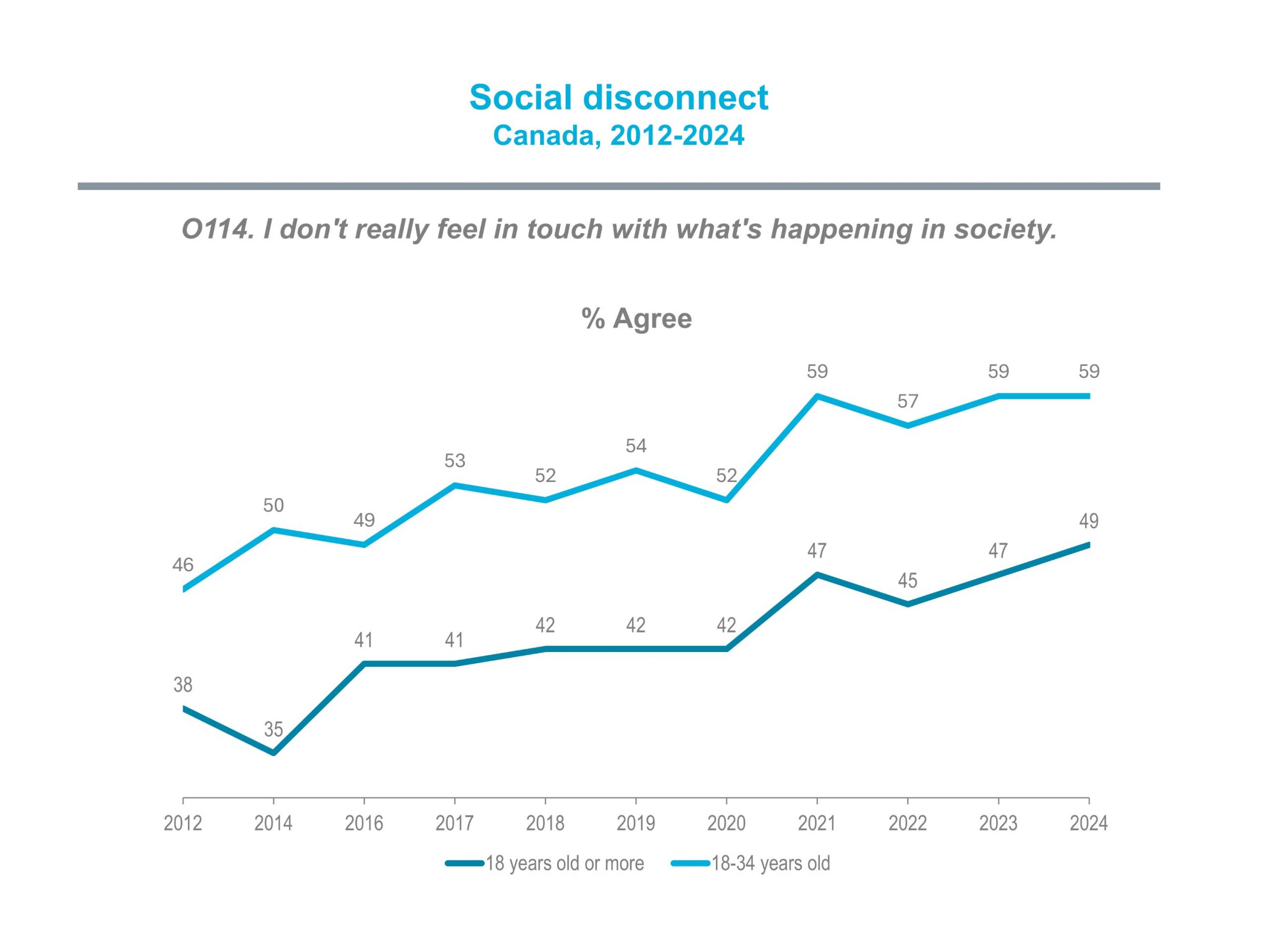
One in two Canadians (49%) say that they feel marginalized, to some extent, from what is happening in society. We consider the size of this percentage to be quite shocking, especially since it has been steadily on the rise for the past twelve years.
But what is even more shocking is that this trend is even more pronounced among 18 to 34-year-olds, accounting for three out of five people in this age group in 2024 (59%).
These young people are having a rather bad time dealing with the world around them.
If this trend continues (as they say in the industry), this type of marginalization is unlikely to abate. Our society is marginalizing people at a rate that is accelerating from year to year, especially its young people. It appears that the new generations are increasingly not finding a place in our world.
Aimlessness in life
Aimlessness—lacking goals in life, leading a purposeless, meaningless existence—is a corollary phenomenon strongly associated with the feeling of having no place in society.
Aimlessness is expressed in proportions quite similar to those of social disconnect, as shown in the following graph:
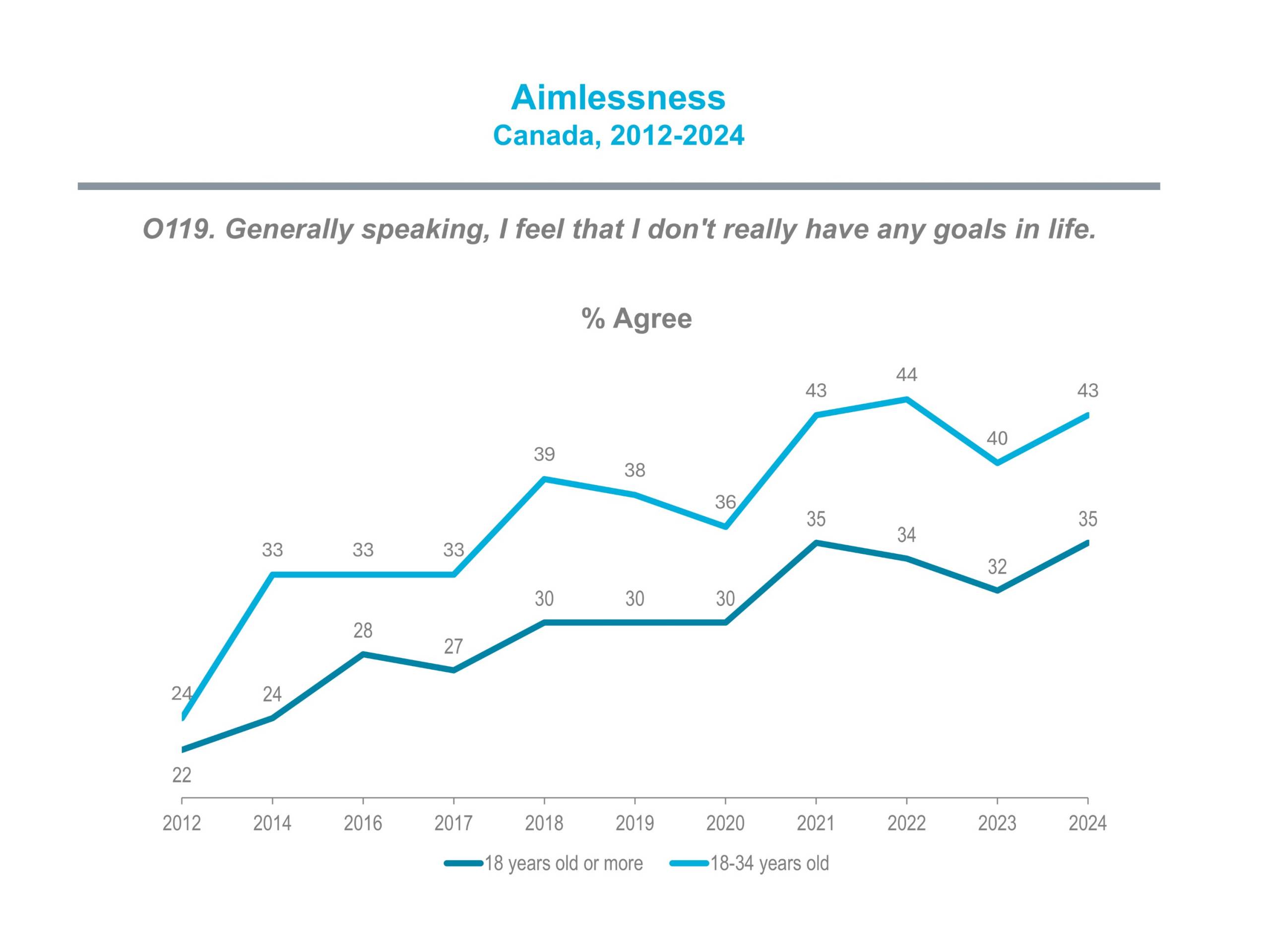
Once again, this sad trend has been on the rise for the last 12 years, and especially among young people.
Neo-conservatism
In parallel with these feelings of psychosocial malaise, we are seeing the development in Canadian society of neo-conservative values that one might have expected to be a thing of the past.
A neo-machismo associated with certain expressions of patriarchal authority has risen in the country in recent years, again particularly among young people, as shown in the following graphs:

As has the desire for male superiority over women in society:
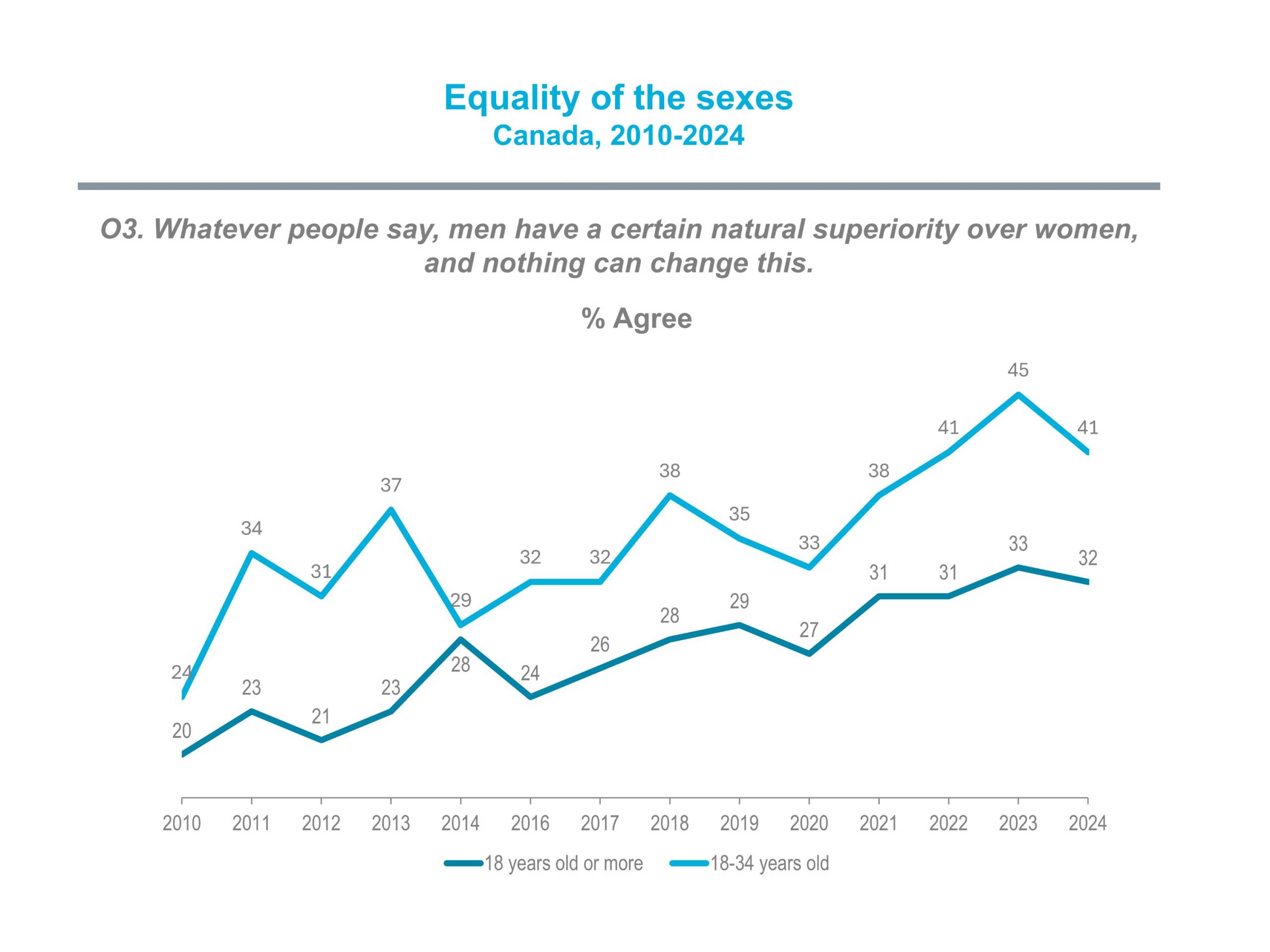
Underlying all these various mental postures is a real quest for identity. Individuals who have trouble making sense of their lives and connecting to the world around them can end up feeling devalued, marginalized, while refusing to see themselves in this light.
Instead, many of them will try to create parallel lives—lifestyles that give them a sense of self-worth by creating identities that they consider admirable.
One example is the subculture of street gangs, immersed in hip hop, creating flashy identities and living on the margins of societal norms, as illustrated in the following graphs that show the over-representation of young people.
Let’s start with the glitz:
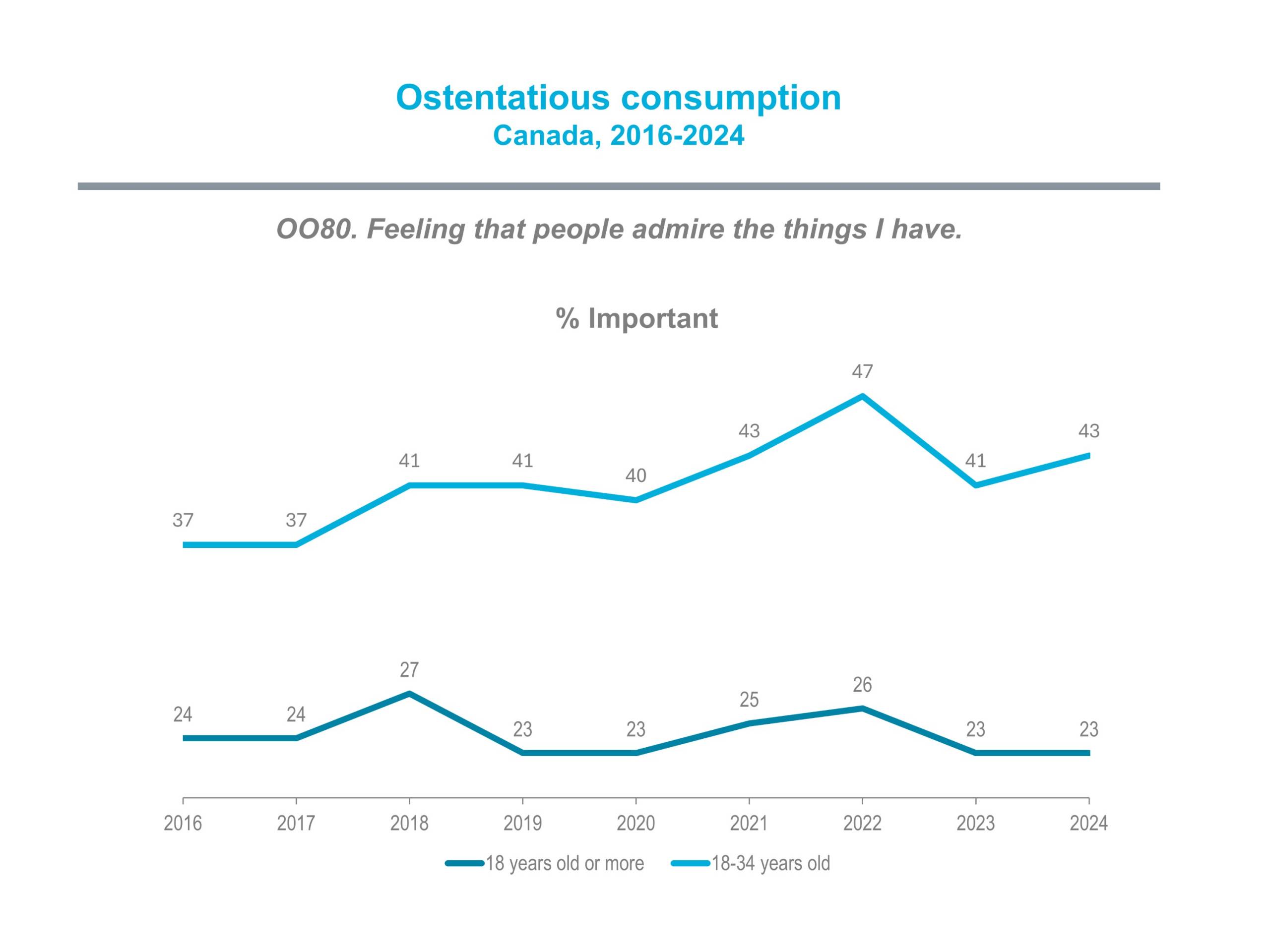
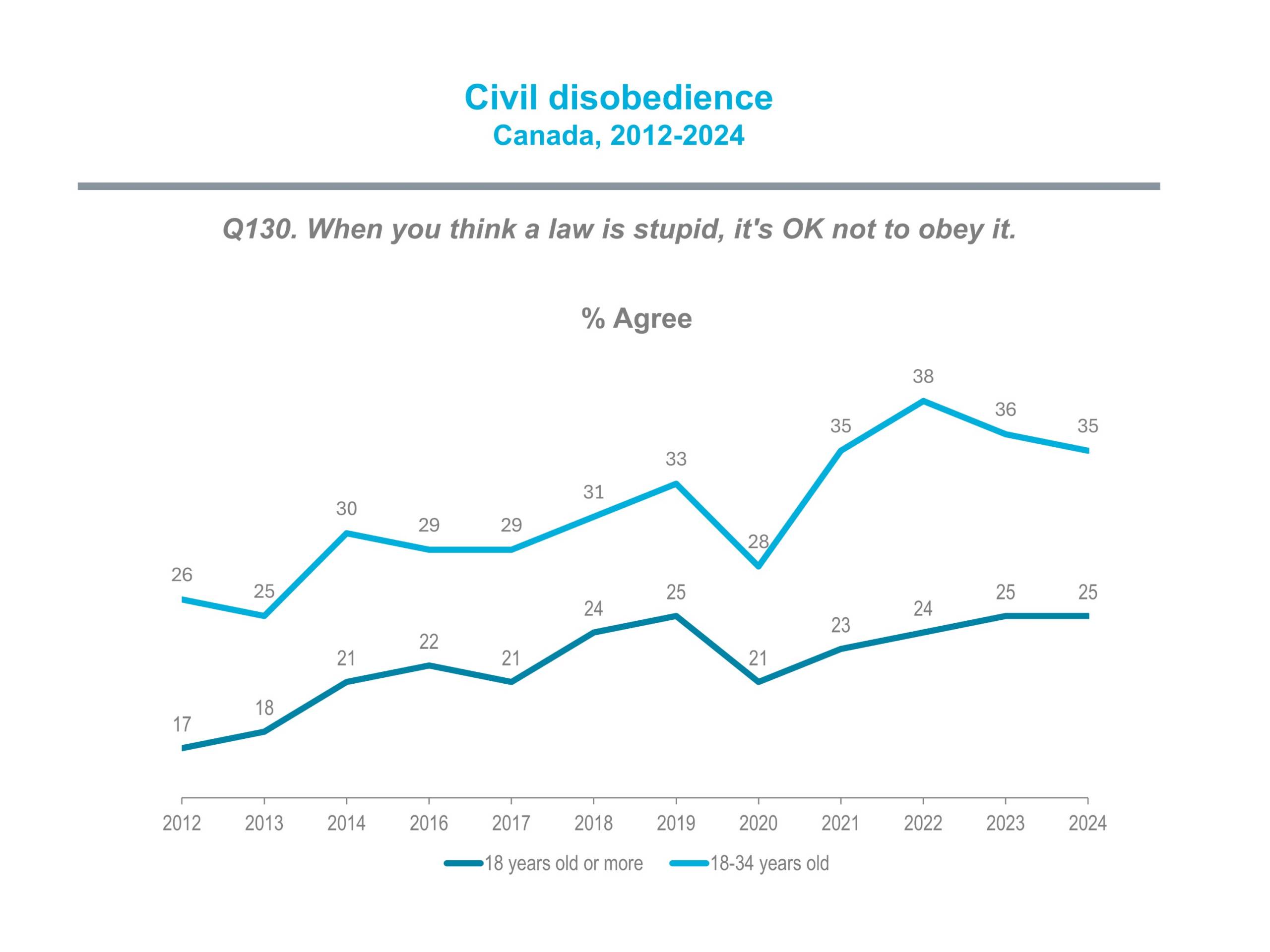
The trivialization of violence
Although we are not suggesting a causal link, our correlation analyses clearly indicate that the previous trends are associated with the emergence of a new legitimacy for violence, particularly among young people:
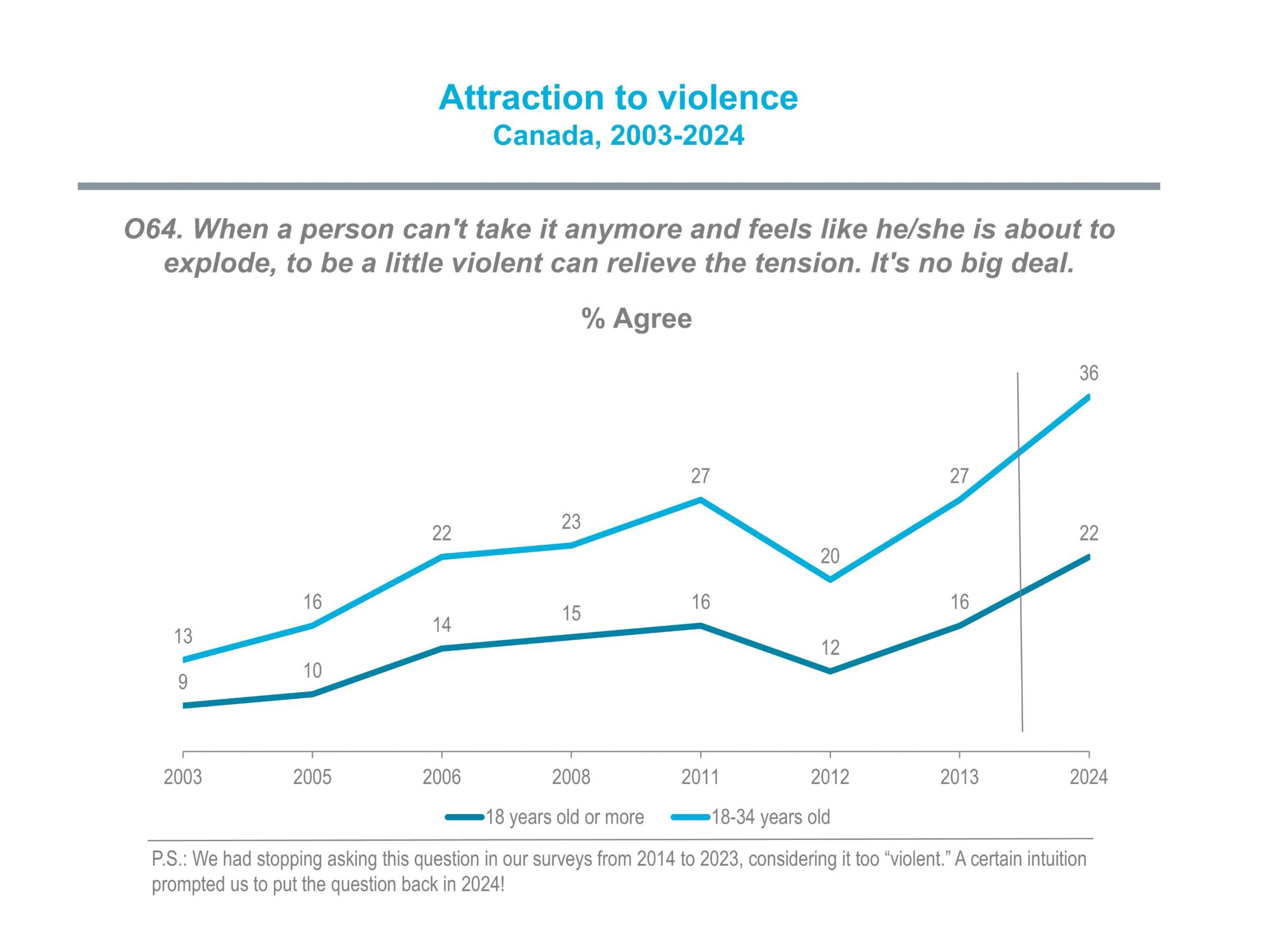
Of course, not everyone who feels disconnected from general society, who struggles to find meaning in their lives or who aspires to a patriarchal society will become violent, nor do all those who “fantasize” about ecstatic eruptions of violence end up acting out or committing crimes.
But it is not inconceivable that, when pushed to the extremes, the expression of all these trends become incorporated into “lifestyles” where violence and criminality can find a home.
The complexity of our society, the rapid pace of change in all areas, the rise in uncertainty, etc. are all factors that create excluded people who live on the margins of popular consensus.
In fact, the motivations and mental postures of these types of individuals are at the root of many of the excesses that we have witnessed in recent years. It is likely that the rise in this marginalization will eventually find more and more outlets for [removed]with social media helping or exacerbating the situation).
These individuals will either isolate themselves in separate worlds fueled by social media or join “communities” that share the same type of cynicism (gang or street culture, or even graffiti, which expresses the desire by the excluded to reappropriate urban spaces, etc.).
They may live lives of distress and suffering or frustration and rage. In this context, crime can become a mode of expression, a quest for identity, as well as an outlet.
The far-right movements, the displays of toxic masculinity, Incels, violence against women, femicide, acts of terrorism, etc.: all these phenomena seem to be rooted in a feeling of being at odds with today’s world, while simultaneously exulting in their marginality with displays of force.
In fact, given the characteristics of these individuals and their number, it is surprising that unprecedented eruptions of violence do not occur more often!
The younger generations
Our surveys, like most of the surveys our industry conducts, unfortunately reflect only the realities of adults 18 years of age and older. This leads us to question the values and motivations of the teens in our country.
We have focused on the 18-34 age group, since official data indicate that this is the age group with the highest incidence of serious crime in the country.
But the younger they are, around 18 years of age, for example, the more these trends obtain, or even intensify, especially the trivialization of violence.
To illustrate, below is the previous graph but this time showing the 18 to 24 age group instead of the 18 to 34:
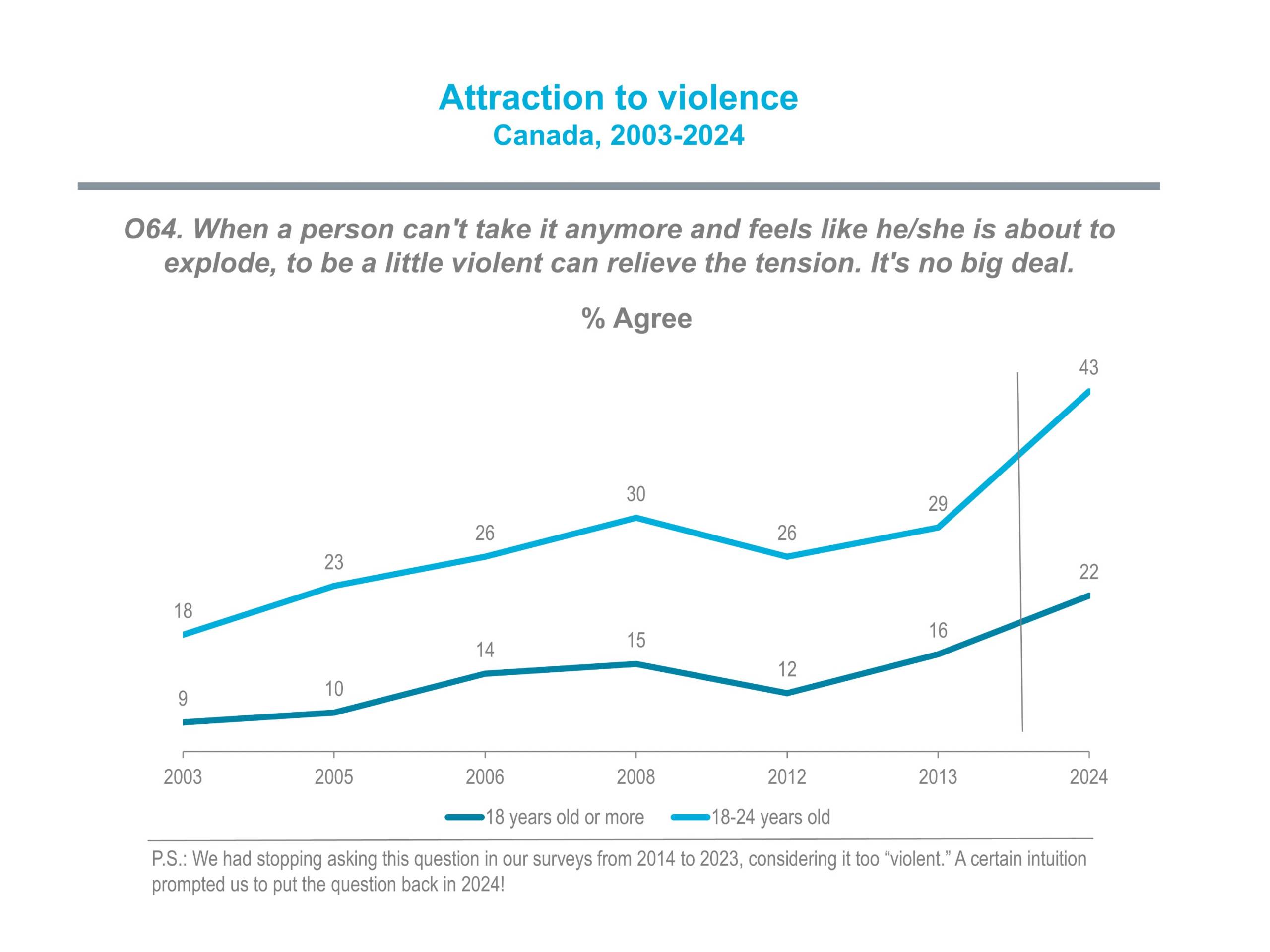
In conclusion, as the younger generations of teens join the “adult world,” we can anticipate a scenario in which all of these trends continue their upward course. Unless, of course, we can re-engage these young people with society.
We will refrain from speculating on the future findings of the Crime Severity Index, but current trends do not bode well!
Let’s hope we are wrong!